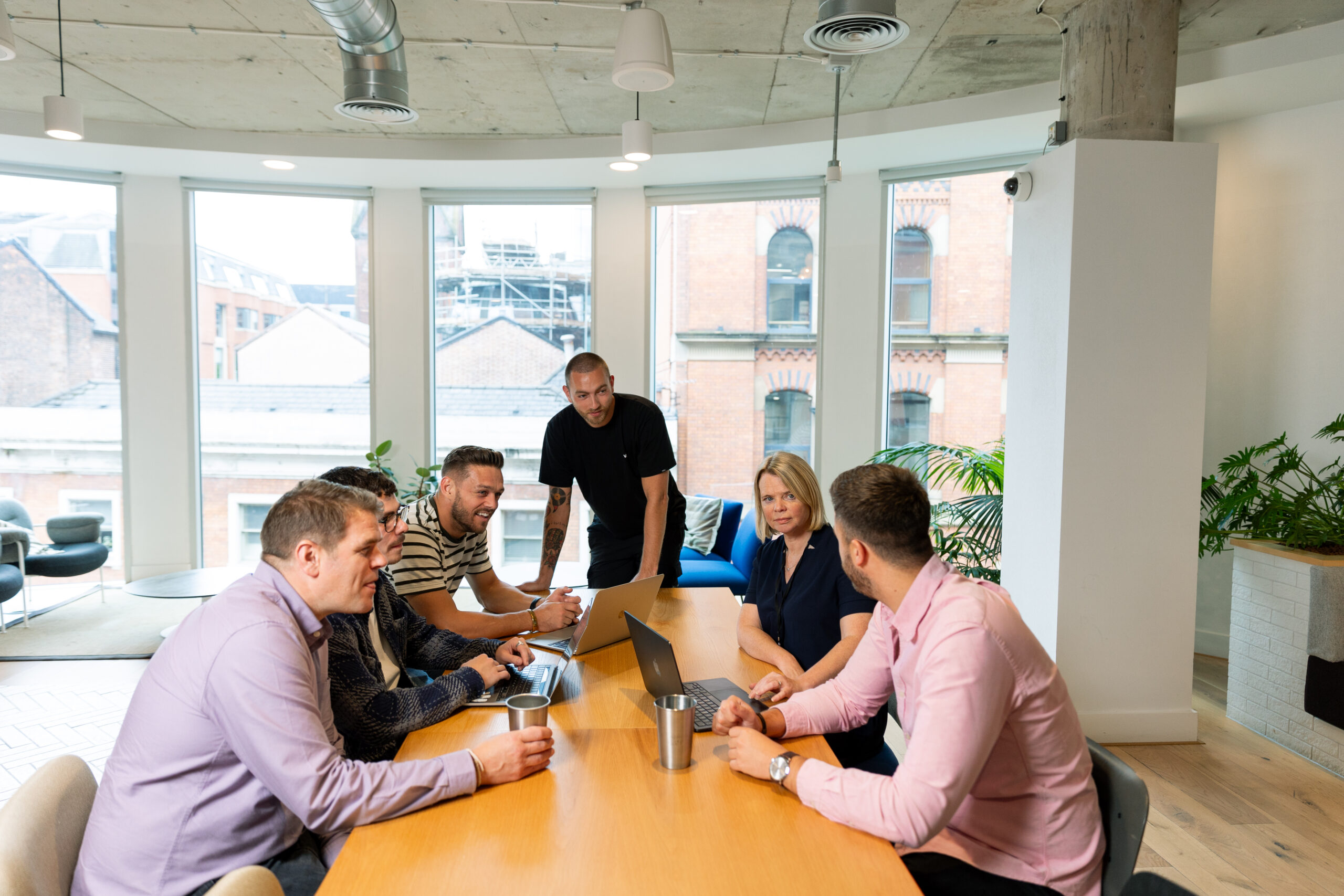How Product Intelligence Enables Continuous Product Discovery

Written by Vypr Founder, Ben Davies
Continuous Discovery Process Applied to Product Innovation
Consumer insights are essential to successful product innovation, but only if they are obtained regularly throughout the new product development (NPD) process.
So, how can product teams apply consumer insights in an easily digestible way that strengthens consumer-centricity across the product innovation process? The solutions lie in building strong, continuous discovery habits that help create customer value.
Faster, deeper user insights lead to faster, smarter, continuous innovation.
Discover how product intelligence empowers faster, smarter product development through faster, reliable insights.
Waterfall vs Agile Innovation processes
When conducting product development research, teams often adopt one of two processes.
The first is the Waterfall process, where work progresses in a linear direction. If changes need to be made during earlier stages, all subsequent activities are disrupted, creating delays and inefficiencies. Traditionally, research only happens at the start to define requirements. While this approach feels structured, it often leaves little room to adapt to new insights that emerge later in the cycle.
The second process has become the preferred approach in many industries, specifically in the software industry. In Agile, teams aim to deliver working products quickly and then iterate based on customer feedback. This method accelerates product delivery but often compromises timelines for research. Because teams work on short sprints, there’s limited space for large-scale studies, and research may be rushed or skipped entirely.
Both approaches have strengths and weaknesses, but neither fully supports the need for ongoing consumer-centric decision-making. This is where continuous product discovery comes in. It allows good product teams to achieve the benefits of this traditional research without sacrificing speed or quality of the insights.
What is Continuous Discovery?
In digital product development, continuous product discovery combines the best of both worlds:
- In Agile teams, it allows brands to enjoy the benefits of traditional research without sacrificing speed.
- It allows product marketing managers, researchers and the product trio (designers, engineers and product managers) to continuously collect user feedback throughout the product development process.
This ensures customer input flows into all product decisions, helping teams spot pain points, test assumptions and keep them user-focused across the entire cycle.
What is Product Discovery?
Product Discovery is a term used in software development that refers to the research that informs what products should be built to solve consumer needs and optimise features.
While continuous product discovery is common in software development, physical consumer goods need a different approach. Teams rely on digital testing tools and smartphones to gather user insights, rather than conducting live testing.
Turning Customer Feedback into Actionable Insights
Gathering consumer feedback is only valuable if it informs real product decisions. Continuous product discovery ensures that insights aren’t just collected; they’re analysed and applied to shape features, validate assumptions, and improve product outcomes throughout the development process. Here’s how teams can put feedback into action.
- Weekly touchpoints with where users interact with the product trio or wide product teams,
- Conducting small research activities that are repeatable, simple to activate and support a desired outcome.
- Digital testing tools to replicate products before full-scale development.
Why Does This Matter in Consumer Goods?
Consumer goods teams face unique challenges compared with software: products are physical, market feedback is slower, and errors are costly once production has begun.
To address these challenges, continuous discovery introduces a set of habits and practices that directly improve product outcomes:
- Traditional project-based research approaches create cognitive biases, fuel high failure rates in CPG and weaken product outcome measures. It then becomes expensive to fix mistakes once resources have already been invested.
- Continuous habits align product outcomes with given business outcomes.
- Decisions are based on consumer perspectives, not speculation.
- Each iteration—via usability tests, user interviews, or assumption testing—helps validate concepts at scale and speed. This reduces risk, drives stronger discovery habits, and improves product decision-making.
So what’s the fix? Incorporating continuous product discovery habits that encourage regular customer engagement as part of an ongoing process. This way, teams can align product outcomes with their desired business outcomes.
This means companies can remove subjectivity, opinions and guesses on how best to optimise and develop products. Instead, they will see their products from their consumers’ perspectives, resulting in smarter product decisions and enhanced customer value.
Each new iteration, usability testing, user interviews and test assumptions allow product teams to rapidly test and validate concepts at scale and speed. This gives them a deeper understanding of customer needs and drives good product discovery habits that improve the decision-making process.
User insights and product analytics help to validate product decisions, helping to deliver the right products through continuous innovation and continuous delivery.
Applying Continuous Discovery to Physical Product Development
For physical products, continuous product testing can’t always be live in the market in the same way that software teams push frequent releases. Instead, teams need to mimic real products during the product development process. By using simple online product testing tools like Vypr, brands canengage consumers and gather feedback whilst still in the development cycle.
So how do you structure the research to ensure you stay user-focused and deliver measurable product outcomes?
- Generate assumptions (will consumers buy this product in this form, at this price, for example) and test them robustly using assumption testing.
- Prove or disprove any assumptions that have crept into the development phase – such as ‘consumers won’t pay more than £2.50 for a product in this category’
- Continuously map and model purchase intent throughout the product development process to track growth in customer satisfaction.
- Conduct rigorous A/B testing on the product design and packaging visuals as part of usability testing and product discovery techniques.
Beyond these activities, continuous discovery requires a cultural and process shift. Instead of long, project-based studies, teams can conduct small research activities. By validating user needs and interviewing customers during user interviews, they can analyse past behaviour during interviews to identify hidden pain points and desires.
This works best when:
- Research, design, and engineering collaborate closely with the product trio for a shared understanding of user needs.
- Teams can integrate business outcome measures with product outcome measures and commit to a regular cadence of consumer touchpoints (weekly or biweekly).
- Insights flow directly into decision-making, making research predictive, not retrospective.
- Success is measured not only in outputs (features, launches) but in outcomes (consumer and business value).
By reframing discovery in this way, businesses can adopt sustainable, financially beneficial habits, reduce wasted investment, avoid late-stage failures, and build products that resonate with real consumer needs.
By placing consumer insights at the heart of product development, continuous product discovery helps businesses deliver both customer and business value.
This also helps companies navigate industry challenges, such as in the food and drink sector, where there are upcoming restrictions on the promotion of foods high in fat, salt and sugar (HFSS). By incorporating frequent customer input, robust product outcome measures and continuous innovation into their workflows, teams can create the right products for consumers that are aligned with market trends and optimise them before they’re launched.
Moving Forward with Continuous Product Discovery
Ultimately, good product discovery relies on incorporating continuous product discovery principles into every stage of the cycle, helping teams when making decisions that generate winning products.
Vypr: Robust Methodology for Reliable Insights
At Vypr, our product intelligence platform helps you getrobust user insights and speedy consumer insights. It’s designed to put the voice of the consumer at the heart of every decision, giving your teams:
- Fast, reliable, consumer insights at every stage of development.
- Scalable testing capabilities to validate everything from early concepts to final packaging.
- Actionable data that aligns product outcomes with business outcomes.
- Confidence navigating market challenges, including complex regulations like HFSS
By working with Vypr, you’ll eliminate confirmation bias and move beyond guesswork and opinion and into a proven process of evidence-driven innovation. Our clients consistently achieve faster cycles, reduced failures and stronger product launches.
Unlock your full product development potential with continuous product discovery powered by Vypr. Try Vypr today and turn consumer engagement into consumer insights that drive product innovation.

Ben Davies, Vypr founder







